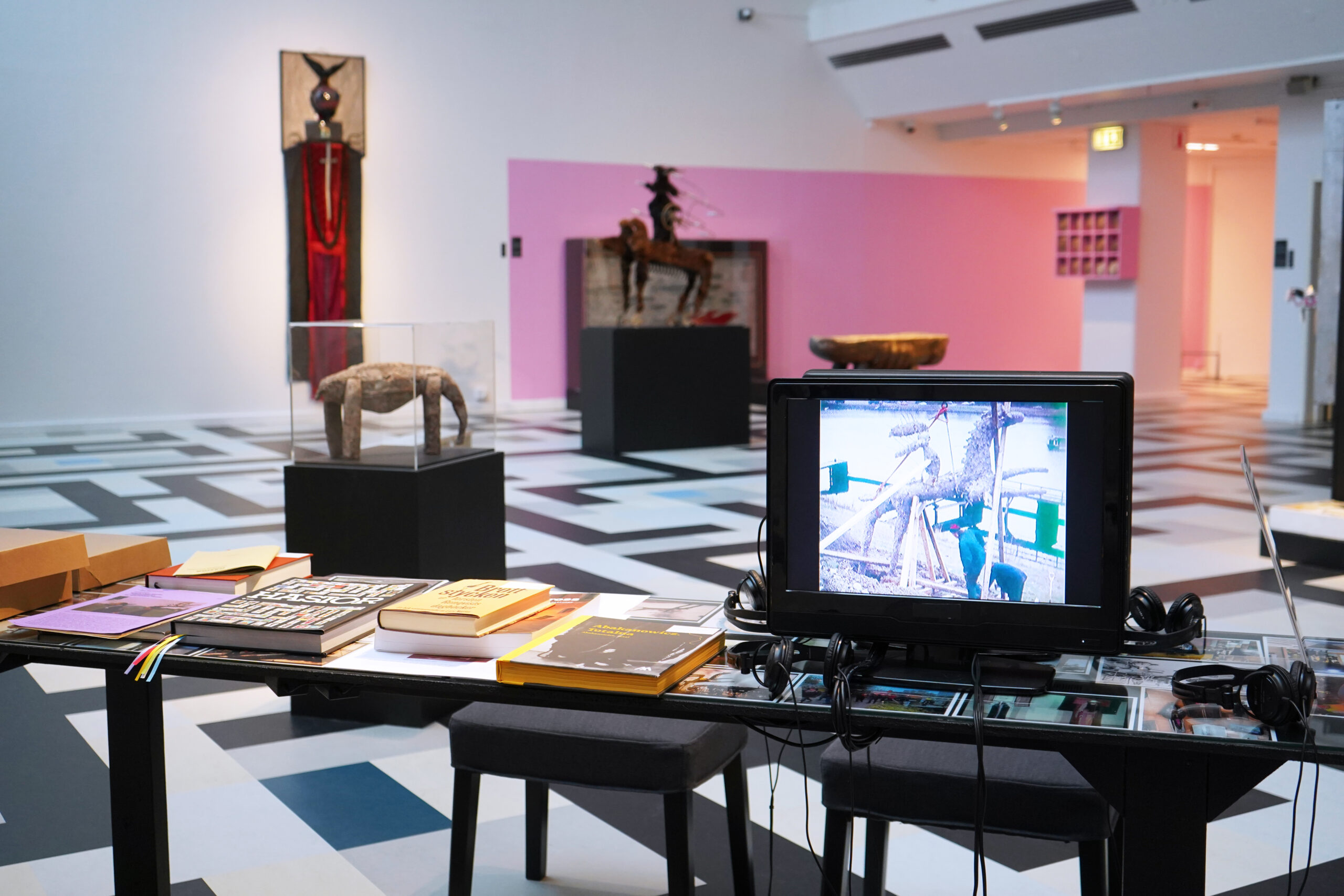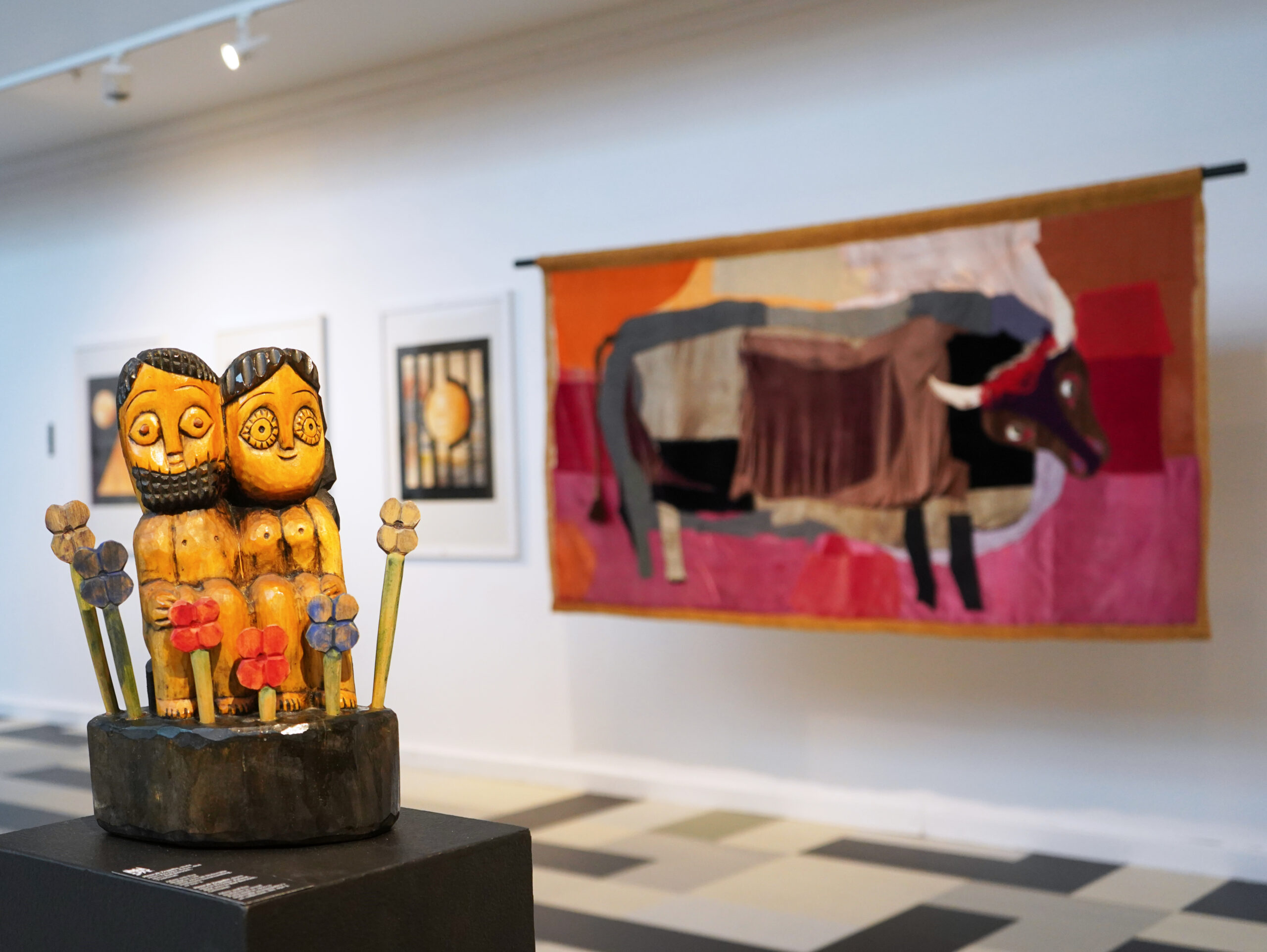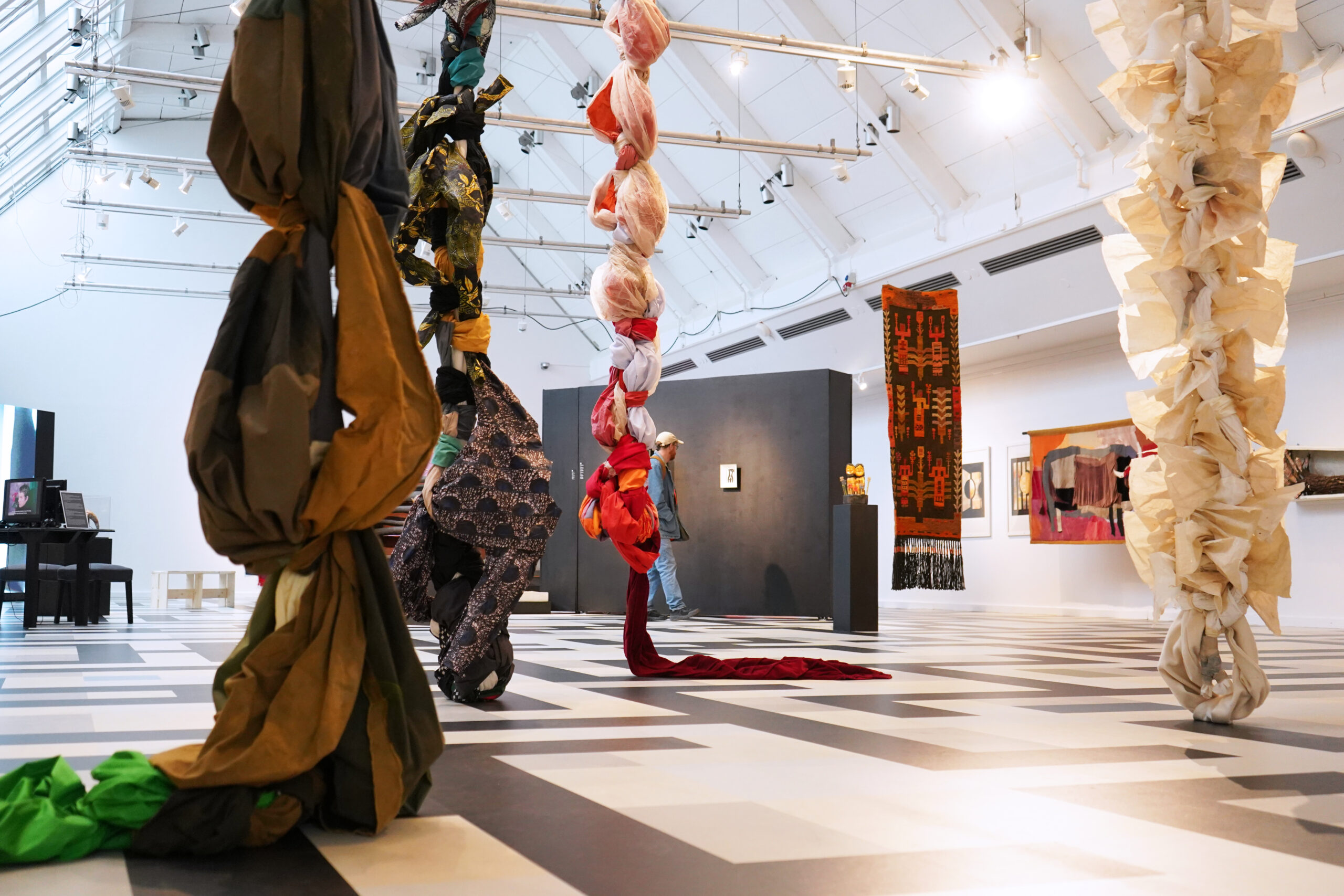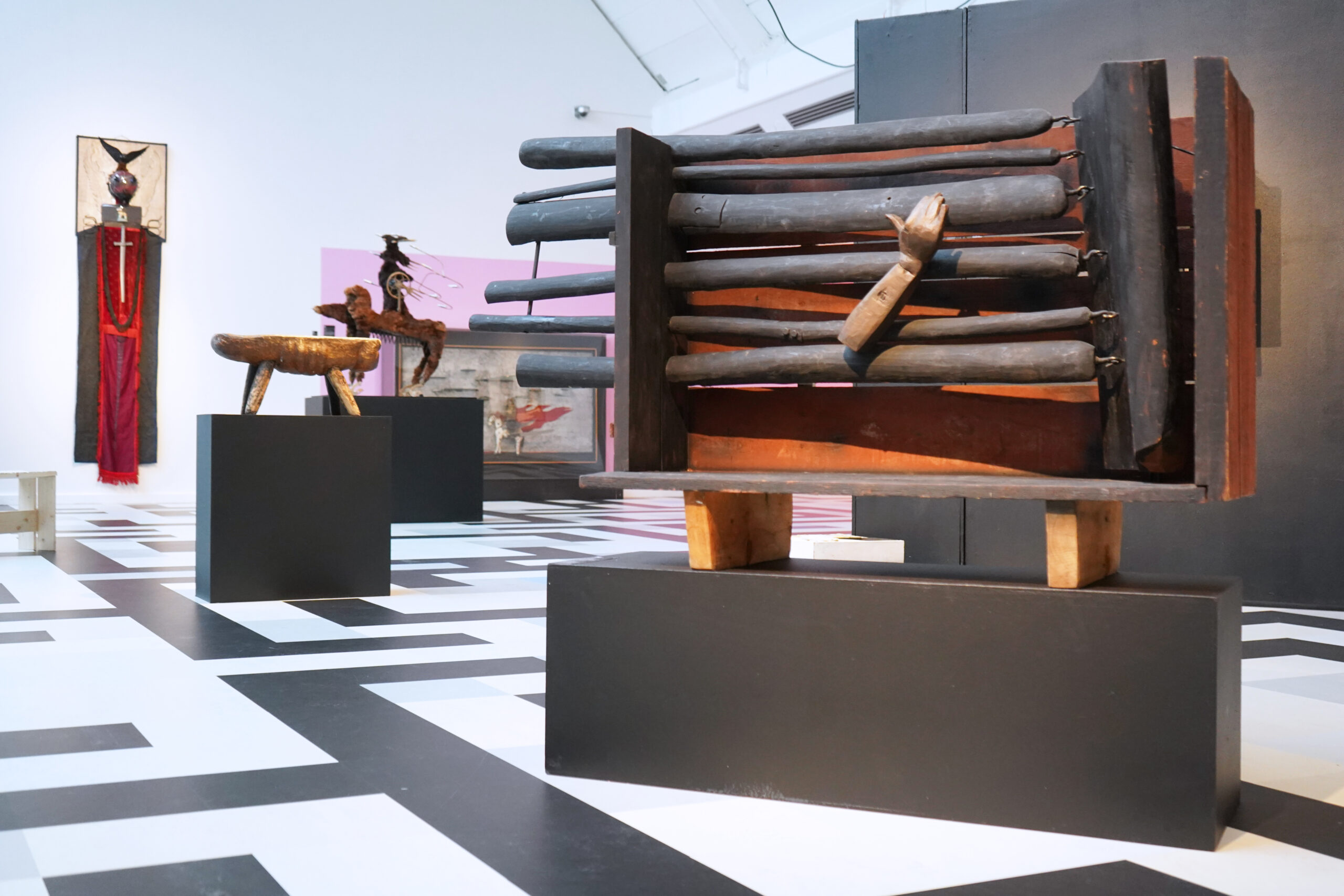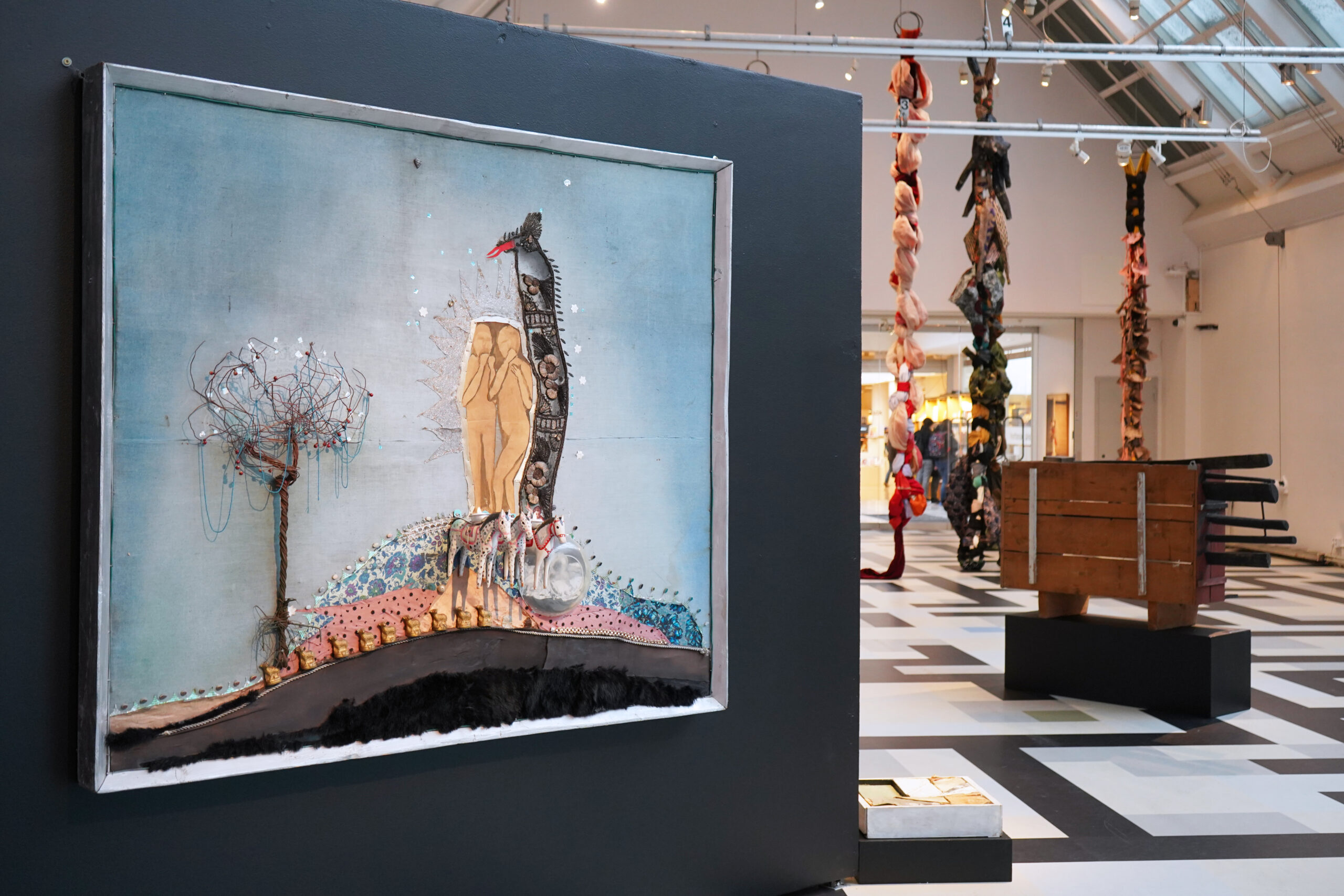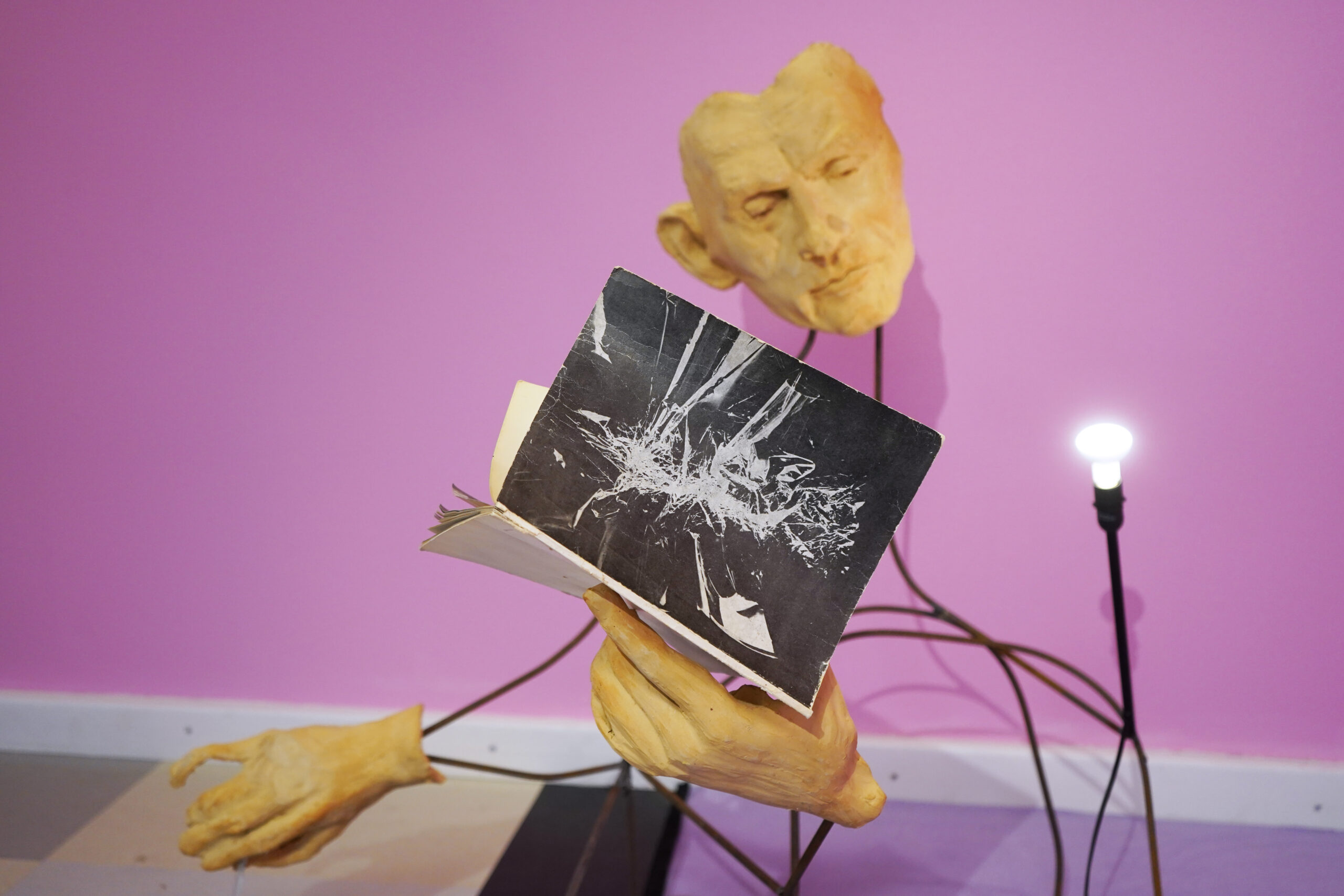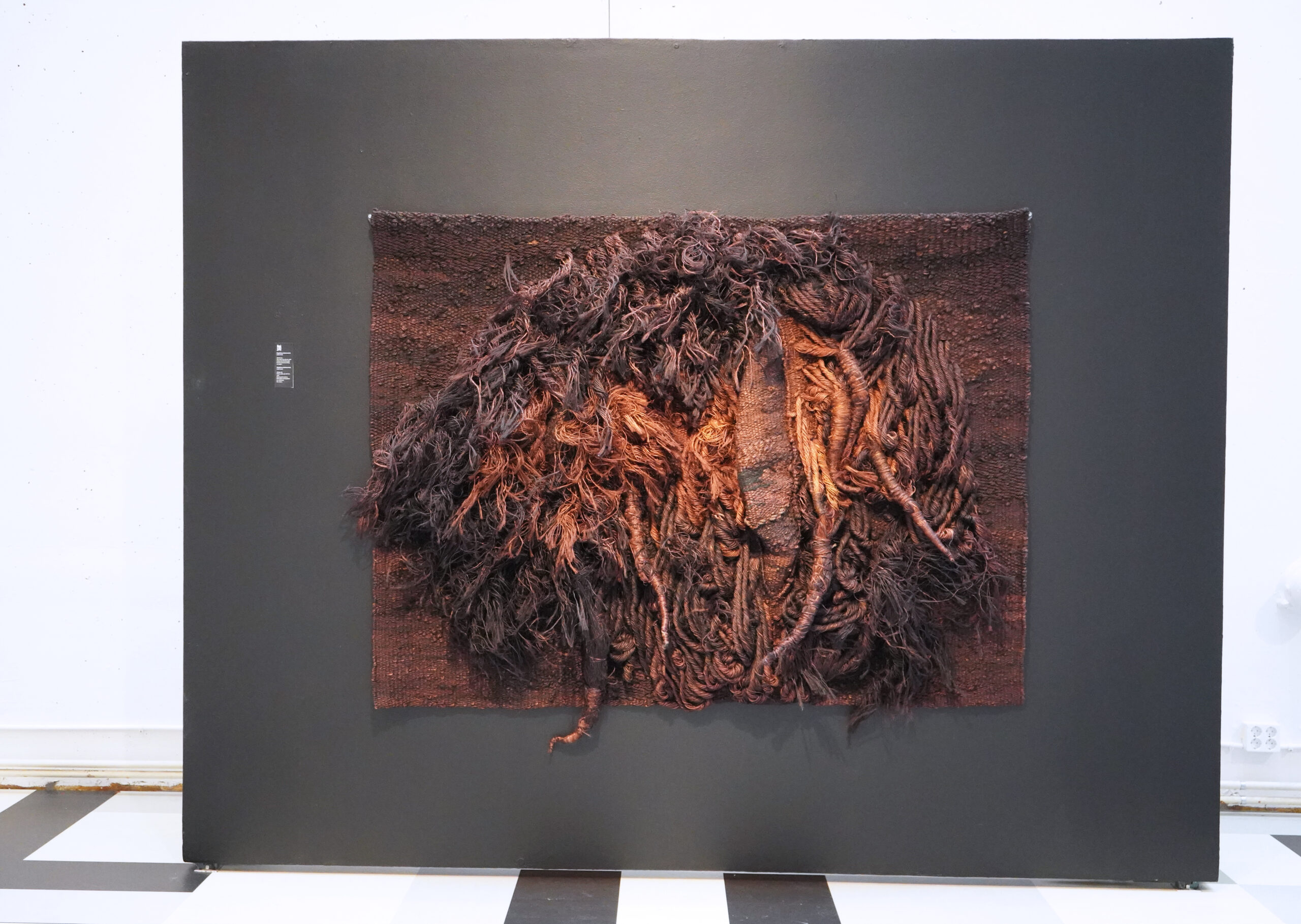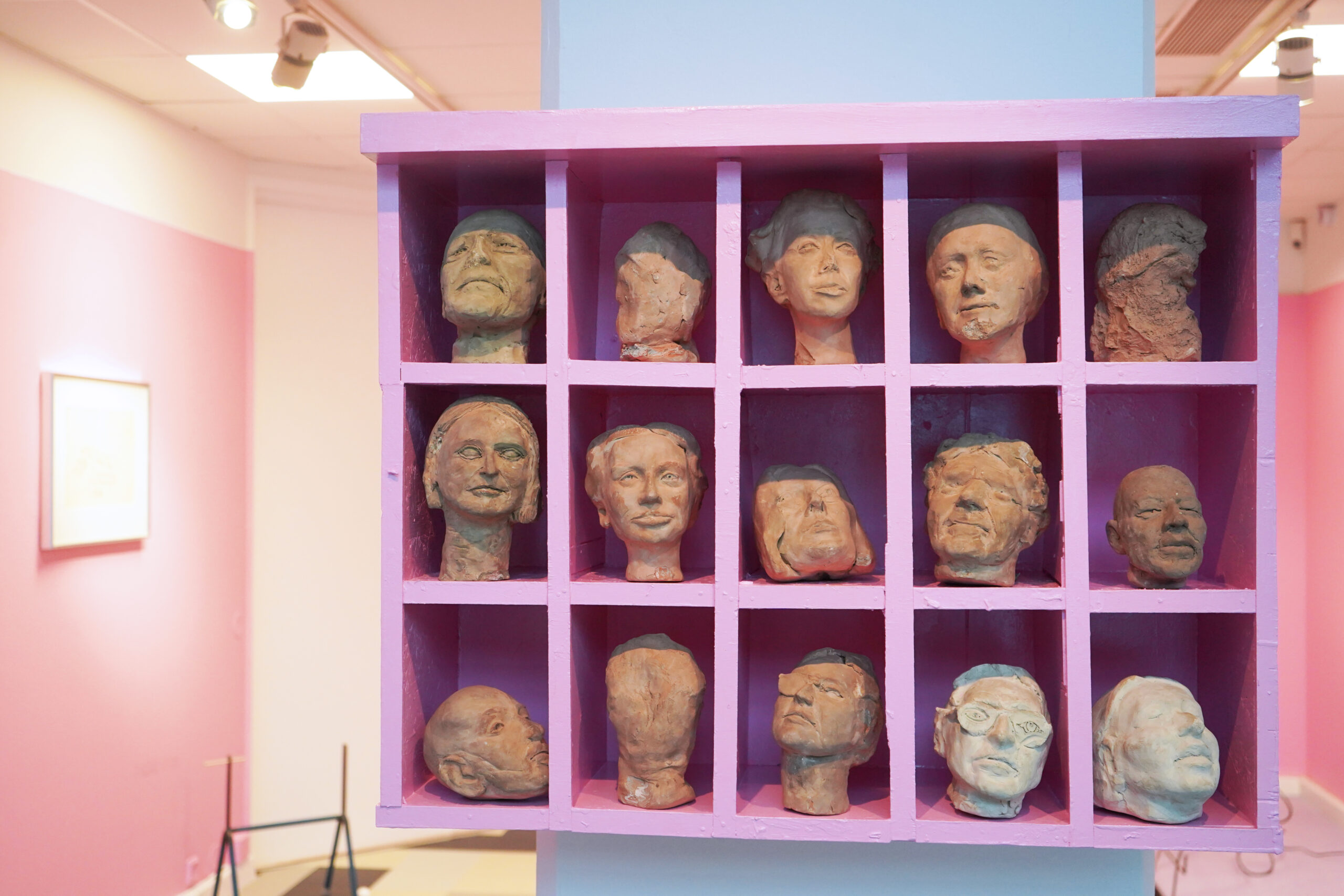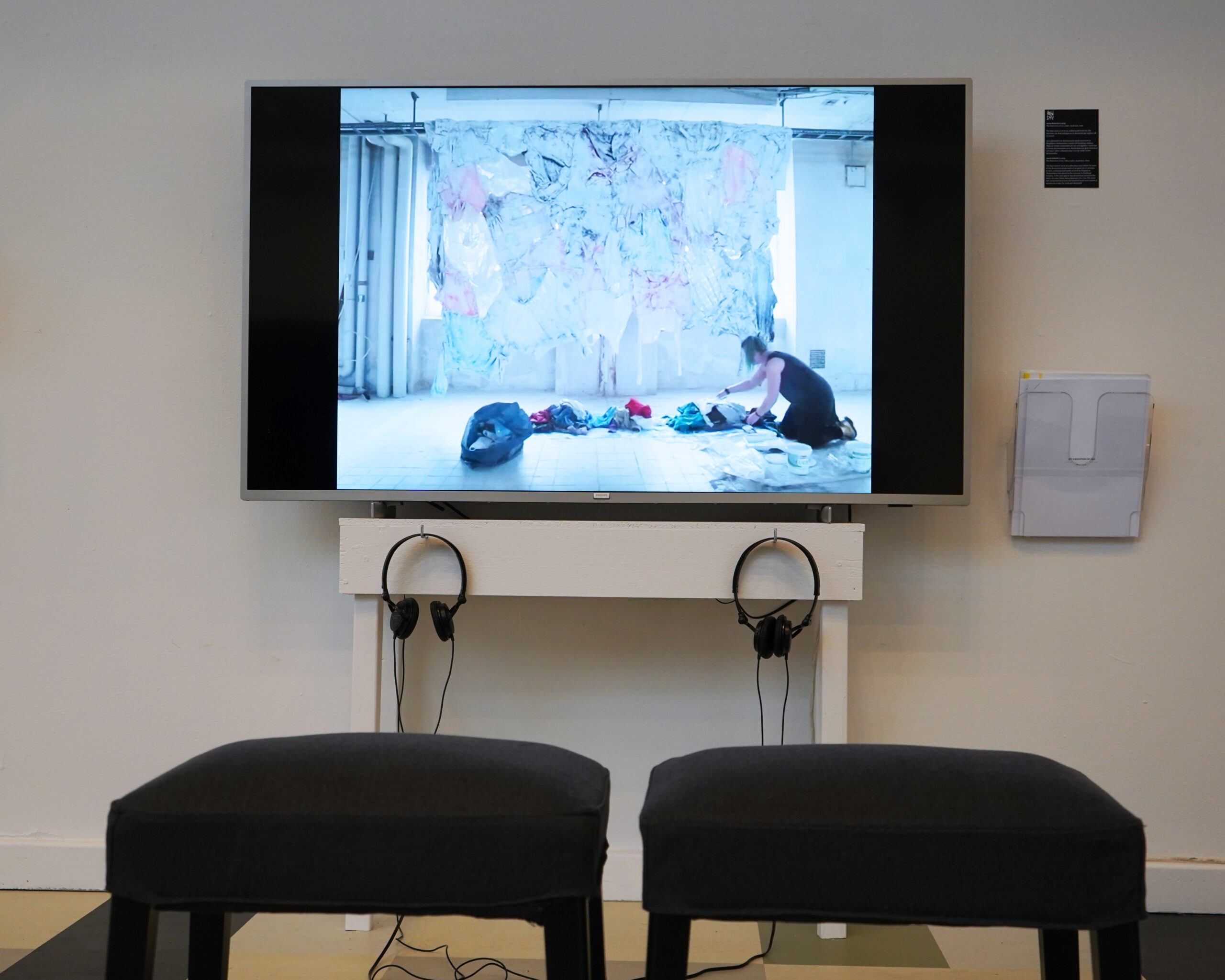
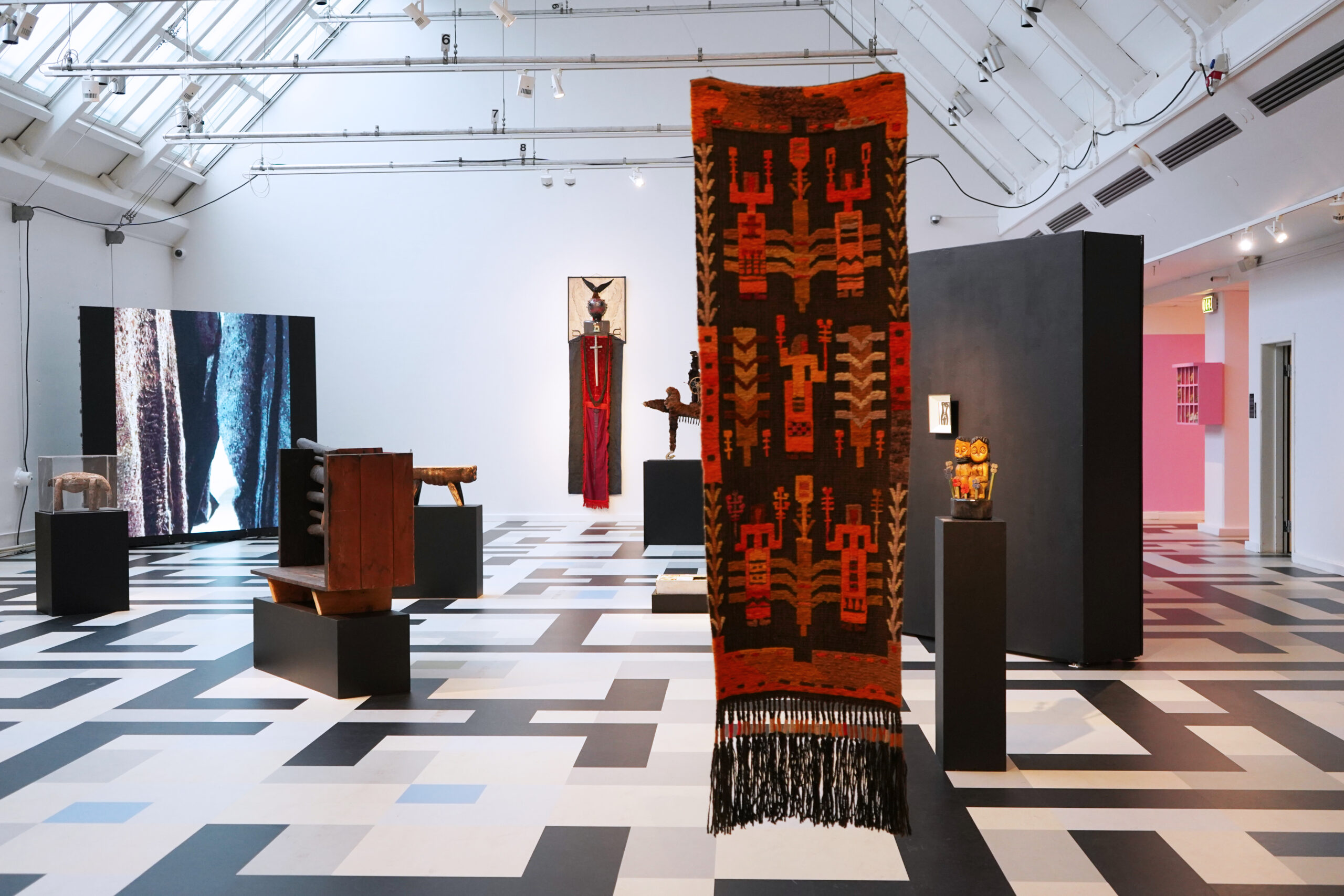

Participating artists: Magdalena Abakanowicz, Jerzy Bereś, Zofia Brodkiewicz-Spławińska, Józef Gałązka, Teresa Seger, Władysław Hasior, Jan Håfström, Anna Kellerth, Natan Kryszk, Éva Mag, Marek Piasecki, Torsten Renqvist, Stanislaw Wisniewski, Henryk Zegadlo.
Opening: Saturday March 23
13:00 Camilla Larsson and Maja-Lena Molin, the exhibition’s curators and Marta Barbara Poznańska, Director of the Polish Institute welcomes you to the exhibition.
Presentation of the artists: Éva Mag, Anna Kellerth, Józef Gałązka, Natan Kryszk and Teresa Seger. Anna-Lena Renqvist presents Torsten Renqvist. Ukrainian-Polish Orchestra plays Polish traditional music.
15:30 We walk in a joint procession from Södertälje konsthall to the canal slope and visit Władysław Hasior’s monumental work Solspann (Sun Chariot), which was built on the site in the years 1972-1976. The walk takes about 20 minutes.
16:00-18:00 Theater Albatross in dialogue with Władysław Hasior
Theater Albatross created scenes and actions in Władysław Hasior’s 1989 exhibition at Södertälje konsthall. Robert Jacobsson takes us to these scenes and a few others. Performance and conversation.
Sagateatern, Strandgatan 2, Södertälje.
Södertälje konsthall was inaugurated in 1968 and already from the start the exhibition programme included art from all over the world. The first years showed art from such widely spread countries as Egypt, Cuba, and Poland. Among the Polish artists who exhibited at Södertälje konsthall, we can count two world-famous – Władysław Hasior (1928-1999) and Magdalena Abakanowicz (1930 – 2017). Hasior attracted worldwide attention for his assemblages combining old toys, religious and everyday objects. Abakanowicz helped revolutionise crafts with textile sculptures and installations in monumental scale. Other artists from Poland who have been shown at the kunsthalle over the years are Marek Piasecki (1935-2011), Stanisław Wiśniewski (1936-2016), Jerzy Bereś (1930-2012), Zofia Brodkiewicz-Spławińska (born 1941) and Teresa Seger (born 1931). They have different kinds of careers, but regardless of their public successes, together they demonstrate the breadth of artistic expression – installations, performance, textiles, sculpture, objects, and painting – that has become the hallmark of Södertälje konsthall. The artworks also show a great richness of materials, including wood, clay, stone, sisal, and other textile materials. It speaks of a sensitivity to basic organic materials that create sensory experiences of our nature. Important aspects of art in a time of ecological crisis.
Article: Entangled History between Semi-Peripheries: Magdalena Abakanowicz’s Fibre Art on the Swedish Art Scene circa 1970. Av Camilla Larsson. Download (double-click) here
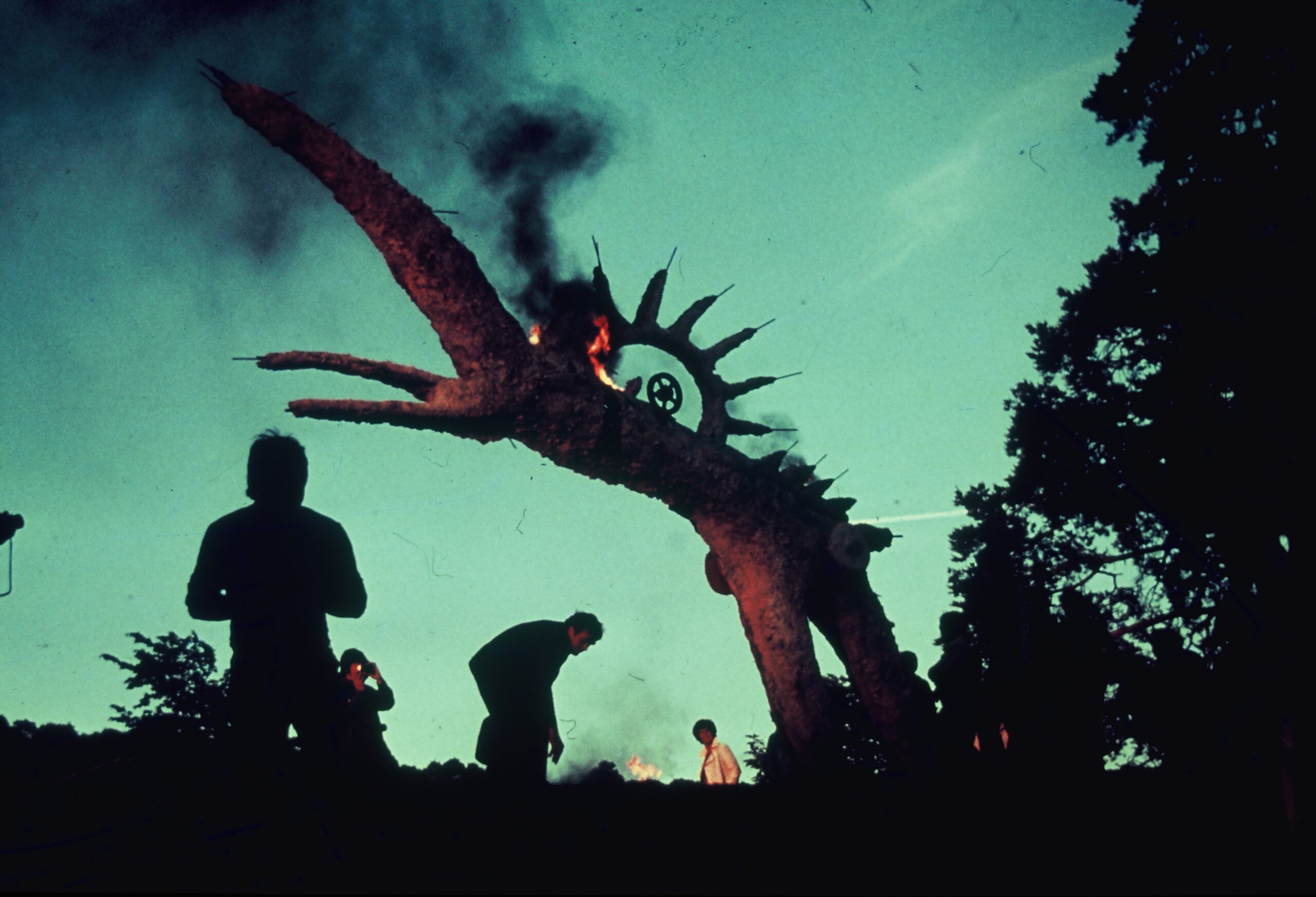
Photo: Illumination of Solspann (Sun Chariot), 1973.

